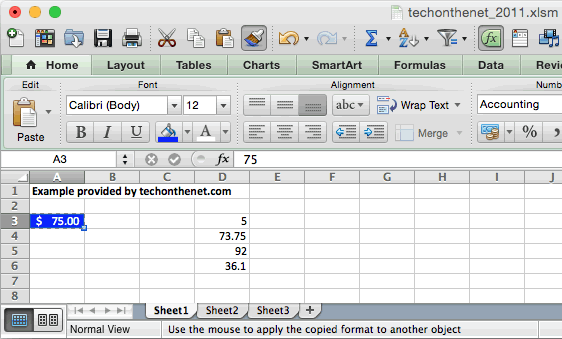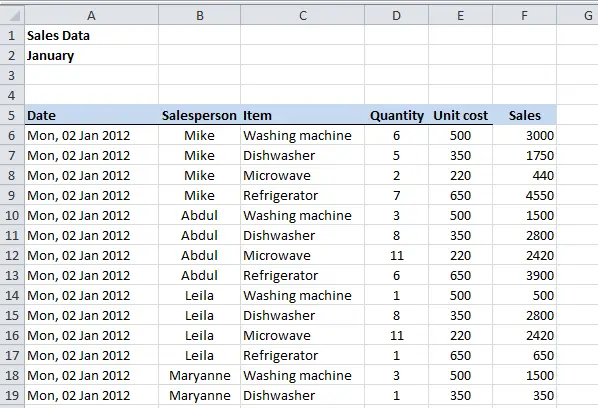
At the press of a button, I need to read data from a Worksheet in Excel, parse the values and export them to a web server, which reads the data and write it in a file on the server. On Windows, everything went smoothly, using MSXML2.ServerXMLHTTP and all, but on Mac it is not possible to do so (This kind of object is part of ActiveX). Excel 2016 for Mac supports ODBC data connections with SQL Server and Azure SQL Database right out of the box. This means several great things for anyone who works with external data: When creating or refreshing data connections to SQL Server, there are no third-party drivers required—everything you need is included right in the app.
Export PDF Form Data to Excel with PDFelement for Mac PDFelement for Mac provides you with simple tools to manipulate nearly every type of digital files. The app comes with a rich collection of tools that can be applied to create PDF forms and Excel spread sheets, fill PDF forms, and export PDF form data to. I was sad to discover that the data form function is missing from excel for mac 2016. According to Microsoft, it's a compatibility issue with Apple's OS.
It’s always a good thing when you can help people fill out a form that you’ve created in Excel 2011 for Mac. One way is to make it harder for them to make mistakes when filling out the form. For example, by using data validation in Excel 2011 for Mac, you can make sure that someone enters a particular kind of data (such as a date, number, or text) into an input field.
Follow these steps to use validation in Excel 2011 for Mac:
Select an input field.
Choose Data→Validation. Or, on the Ribbon’s Data tab, go to the Tools group and click Validate.
On the Settings tab, choose a setting from the Allow pop-up menu.
Data Validation is an interactive dialog; its options change depending on what you decide to allow.
To require a valid entry, deselect the Ignore Blank check box. Pressing the Tab key won’t advance to the next field until a satisfactory entry is made. This setting applies to all data validation Allow choices. Other methods of selecting cells are not disabled, however.
(Optional) On the Input Message tab, give your message a title and type an input message in the Input Message field.
The input message appears in a ScreenTip when you select the input field in a protected form.
(Optional) On the Error Alert tab, select an error alert style and then type an error message in the Title and Error message field.
Customize the error message that a user gets if he fails to follow the data validation rule you create. Try not to be sarcastic in these messages. After all, you don’t want to hurt feelings or ruffle feathers.
Click OK to apply the validation rules and close the Data Validation dialog.
In today’s example we’ll introduce data entry with the help of the UserForm. Using UserForm can considerably improve the interaction with our users. Furthermore this way we can assist them to execute particular steps.
They play a very important role in the automatization of Excel. In these days none of the business dashboards can be imagined without Form Controls.
Let’s say a few words about today’s task. At times data entry can be very boring and by this can incline users to mistakes. We’ll design a form that based on three data (Name, Age, Job title) will upload a “database”.

Exactly as you can see on the picture below!
What can exactly be seen on the picture?
Three label, three text fields. And another thing, the Command Button. We’ll assign to this a simple macro that will store input data.
How to create a UserForm to aid data entry?
Let’s start! The first step is to enter the Visual Basic Editor form the ribbon or by pressing the Alt+F11 buttons.
Open the VBA Editor. If the Project Explorer is not visible, click View, Project Explorer. Click Insert, and select the Userform.
After this place the fields and their names onto this form.
Now insert the names of the fields by clicking on the Label Control button:
As next step follow the TexBox belonging to the names. This option enables the data insertion.
Change any elements and attributes of our form by right-clicking on them and then choose the Properties window.
As next step we have the option for example to set the fonts, size and colors.
We can be all creative regarding the designs. We can make any kind we’d like or what we need for a given task.
Now we will place another button on this form. The purpose of this is to fix the given data on one Excel table.
We do this by inserting the CommandButton from the Controls:

Let’s see what the data entry form looks like now:
The user interface is ready! Data input will be a lot easier from now on. But we still have one very important thing to do.
Because for the next step we have to determine the code behind it.
In this example this would run by clicking on the “Add to list” button.
Let’s right click the CommandButton.
From the drop down menu choose the View Code command. In the next chapter we’ll show how to assign a short VBA code to this.
Adding Logic to Button in a Form
Let’s clear what do we expect from the code after clicking on the button?
Our expectation will be that it inserts the values of the UserForm into the determined cells of the determined rows.
For this we have to know where the next empty line in the table is.
After the insertion we have to equal the appropriate cells to the input values of the appropriate fields.
To begin let’s define two variables.
The first one with Integer type by the name rw to determine the current, still empty rows.
The second one by the name ws and with type Worksheet.
This will determine which worksheet our form will refresh / update the cells.
We can already set the calues of the latter variable onto Sheet1.

Use the Range Find method to determine the starting value of our rw variable.
In our case we have to use the ws.Cells.Find method, because we are looking amongst the cells of Sheet1 that contains anything (What:=”*”).
We search by rows (SearchOrder:=xlRows) for the row containing the last (SearchDirection:=xlPrevious) value (LookIn:=xlValues).
Than we add one to this number to find the first empty row:
rw = ws.Cells.Find(What:=”*”, SearchOrder:=xlRows, SearchDirection:=xlPrevious, LookIn:=xlValues).Row + 1
And from this point on our task is basically easy.
The written value in the field must be equal with the rw variable. We store the number of the cells in the rw variable.
We can find out the names of our fields from the UserForm Properties window in case we did not use standard names for them.
Therefore, ws.Cells(rw, 1).Value (this is the cell of Sheet1 first empty row in the first column) be equal to Me.TextBox1.Value which is the value was given into our first field.
Me always refers to the parent object that we “have” our code.
In this case it refers to UserForm, but if we was to write our code on a Sheet, that it would refer to that.
Create User-Feedback MessageBox
Here might be subservient to inform the user what happened to the input data, so with the help of the MsgBox command we can write a massage out for him.
At this time on the popup massage window there should be only one OK button (vbOKOnly parameter) but of course with the help of the other parameters of the MsgBox we can tune this to our liking.
MsgBox “Stored!”, vbOKOnly
If it is done we can delete the input values from our fields. We can do this because they are already in the appropriate cells.
The solution is easy:
We make the value of the Me.TextBox1.Value equal to nothing.
After this is useful to bring back the cursor to the first field with the help of the SetFocus parameter.
Error handling – How can we do this?
Basically we have to endeavor to write the codes with minimal possible errors.
For this it is useful to insert an “If” branching so in case of empty cells the UserForm will do nothing. Our goal is to only store the data if all the cells / fields are filled out! The following short code will alert the user for insufficient data.
Data Entry Form In Excel For Mac
Simply turn our thoughts to the code, namely
1. Put (If) after the removal of spaces (Trim)
2. Values of the first fields (Me.TextBox1.Value)
3. Equal to nothing (= “”)
4. then (Then)
5. write a massage (MsgBox “Please fill the field!”),
6. then exit (Exit Sub)
7. and with this we can close the “If” branching (End If).
The VBA code:

What else is there left to do? To determine how to start the UserForm.
Here we can set events or key-combinations also.
Excel Data From Mac
In our example we choose the simplest solution. We assign the startup of the code to a CommandButton.
Under the Ribbon Developer tab the Controls section can be found.
Let’s insert a button with the help of the Insert command:
By double clicking on the button in Desingn Mode we get over to the Visusal Basic Editor.
We only need to show the UserForm named by us DataEntryForm command for the “Click” event.
Here is the code snippet:
And we are done!
After clicking on the button the UserForm opens. After filling this out the data gets into the appropriate cells.
Conclusion:
Our today’s data input showcase example was a very simplified task.
But it was perfect or us to demonstrate: It is worth to use Excel for serious tasks and the VBA help us to create interactive form for excel dashboard.
We hope you got into the mode for VBA programming. We recommend that everyone start building their own little project! Download the VBA example!
Related articles:
- Great macro collection to learn vba from scratch!
- Create dynamic VBApresentation